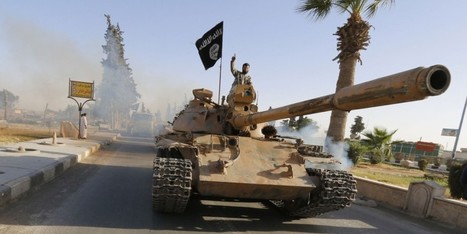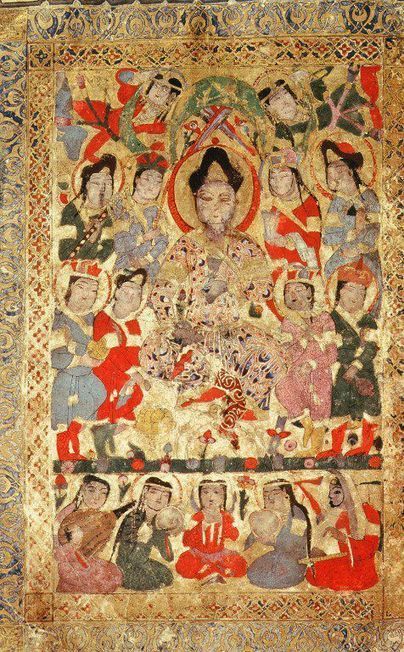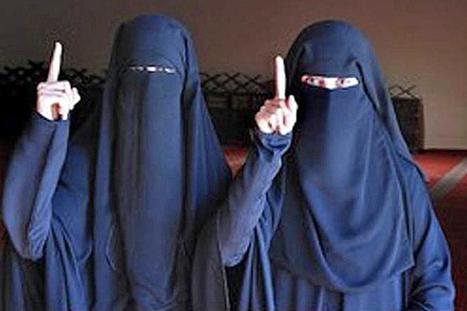Girls can marry at 9 then stay veiled and house-bound the rest of their lives. Quilliam, the counter-terrorism organization, translates an ISIS “manifesto” for Arab women.
In late January online supporters of the so-called Islamic State—the group that now controls a territory larger than the United Kingdom, spanning the deserts of Syria and Iraq—began circulating a document entitled “Women in the Islamic State: Manifesto and Case Study.”
The Arabic text, which was uploaded by the all-female Al-Khanssaa Brigade’s media wing onto a jihadist forum used by ISIS, as the group is widely known, was distributed extensively among its Arabic-speaking supporters. But it was not picked up by Western jihadists, male or female.
The treatise—the first such document of its kind—clarifies a number of issues hitherto obscured by the language barrier. It attacks at length notions of “Western civilization” and universal human rights such as gender equality. It allows us to get into the mind-set of the hundreds, perhaps thousands, of women who willingly join the group’s ranks.
Much of what ISIS supporters claim on social media is designed to exaggerate, obfuscate and confuse. However, this document, clearly intended as a means of drawing in women from countries in the region, in particular those in the Gulf, presents something that is more akin to the realities of living as a female jihadist in ISIS-held territories.
From it, we learn that, while there are indeed all-female police brigades operating in Iraq and Syria and that, in certain circumstances, women may be called to battle, policing and fighting are very low on the list of responsibilities given to women. Rather, the emphasis throughout the manifesto is on the importance of motherhood and family support—in this sense, ISIS is no different from any other jihadist group. It is fundamentally misogynist and, within its interpretation of Islamism, the role of women is “divinely” limited.
The document is split into three sections: The first portion deals specifically with “Western” preoccupations like feminism, education and science. The second part is based on the author’s (or authors’) eyewitness account of life in the territories now controlled by ISIS, first in the Iraqi city of Mosul, and, secondly, in the Syrian city of Raqqa. The final section is a diatribe that compares life for women living in ISIS-held Syria and Iraq with life for women living in the Arabian Peninsula, particularly in Saudi Arabia.
Importantly, this document is not in any way aimed at a Western audience. Indeed, that it went untranslated is telling. It is a well-known fact that ISIS has a large number of English speakers within its ranks, and we have seen plenty of evidence in the past that renders apparent their ability to have propaganda translated into fluent English, French and Russian. This one targets Arab women, no more and no less.
The text is, unsurprisingly, laced with references to the Islamic scriptures. However, the myriad references—overt and otherwise—to Saudi Arabia suggest that the target audience can be narrowed down ever further to women in the Kingdom. It is therefore unlikely that this was released January 23, on the same day as the death of King Abdullah, by simple coincidence.
ISIS propaganda is always carefully honed to a particular target audience. For example, all the videos and photo reports that make it into Western media are intended to find a home there—the atrocities they depict are, first and foremost, designed to provoke outrage in the international community, a tactic that is part and parcel of the ISIS polarization strategy.
But this document plays on themes strikingly different from those used by the chief recruiters of Western women to ISIS, its English-speaking muhaajirat population.
The manifesto is written in typical jihadist patois, and some sections have an almost juvenile ring to them. It tries to convince its audience that it is a fundamental necessity for women to have a sedentary lifestyle. Indeed, this is her “divinely appointed right.”
The first section, especially, provides an illuminating look into the psyche, ideology and worldview of a female ISIS supporter. After cataloguing the ills suffered by Muslims at the hands of Western civilization, it turns to the question of education: Since scientific research is central to modernity, it thus follows that the pursuit of any knowledge (except that which regards religion) is pointless. The West’s obsession with studying “the brain cells of crows, grains of sand and fish arteries” is deemed a distraction from the fundamental purpose of humanity—to worship God.
This, the manifesto argues, has sullied humanity’s purity. In the same breath, though, the author(s) insulate themselves from accusations of hypocrisy by claiming that those sciences “that people need, that help facilitate the lives of Muslims and their affairs are permissible.”
Such hypocrisy is at the root of all extremist Islamist thinking.
The above argument then moves, almost seamlessly, into an angry response to feminism, the “Western program for women.” This, the manifesto argues, has failed. The blurring of lines between the roles of each sex has caused people to forget how to worship God properly—it is a distraction that is tearing society apart.
In its attempt to identify the root cause of it all, the manifesto blames the emasculation of men. Because, it is argued, “women are not presented with a true picture of man,” they have become confused and complacent, unable to fulfill their appointed responsibilities, most of which revolve around motherhood and maintenance of the household.
The implication is obvious—the men of ISIS are deemed to be “real men.” Therefore, to live a sedentary life within the so-called Caliphate, to be exposed to their “rightful masculinity” would not only right the wrongs felt by the “Muslim community” today, it would allow a woman to be a better Muslim.
The manifesto advocates education for women, but only up to a point. A woman cannot fulfill her role if she is “illiterate or ignorant”, the manifesto argues. A curriculum is proposed would begin when girls “are seven years old and end when they are fifteen, or sometimes a little earlier”.
Then comes marriage. According to this treatise, a bride can be as young as nine years old. From this point on, it is the woman’s “appointed role [to] remain hidden and veiled and maintain society from behind.” In a jihadist perversion of feminism, then, the importance of women is championed. She is deemed to play a vital role, but always from the background.
Meanwhile, she faces myriad restrictions and an imposed piety that includes hudud or fixed punishments for breaches, including beheading, amputations and stoning.
ISIS, as usual, adapts its rigid rules to suit its own circumstances. So, some of its women are permitted to leave their houses if they are going to study theology, if they are women’s doctors or teachers, of if they have received a fatwa saying they must engage in jihad “as the women of Iraq and Chechnya did, with great sadness” when their community was in great danger.
The case studies of women “in the shade of the Caliphate” portray their experiences through rose-tinted glasses. There are no references, for example, to the myriad abuses against women that are carried out in the name of implementing ISIS’s austere version of Islamism.
The final section compares how women fare in the Arabian Peninsula to what their lives are like in ISIS-held Iraq and Syria. A litany of the offenses carried out by the Saudi monarchy is presented covers issues that range from “higher education” to “driving.” The text implores women living in the Kingdom to migrate to ISIS-held lands, and to do so urgently.
For the ISIS ideologue, women have been appointed by God with the qualities of “sedentariness, stillness and stability” and men, “their opposites: movement and flux.” The matters of adventure and excitement, themes most used by female Western recruiters trying to lure young girls to ISIS, are limited to the realm of men.
This article was adapted from the Quilliam introduction to the “Women in the Islamic State.”



 Your new post is loading...
Your new post is loading...









